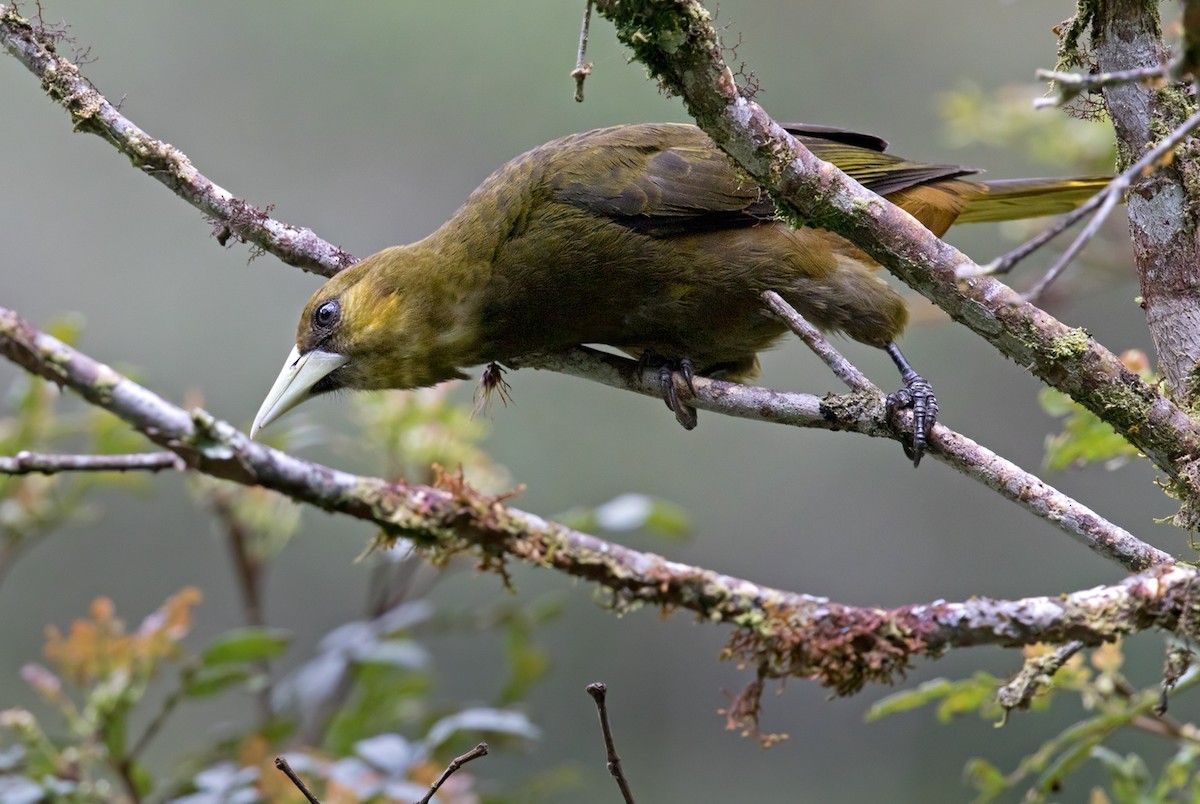Dusky-green Oropendola
A species of Oropendolas Scientific name : Psarocolius atrovirens Genus : Oropendolas
Dusky-green Oropendola, A species of Oropendolas
Botanical name: Psarocolius atrovirens
Genus: Oropendolas
Content
Description General Info
 Photo By Lars Petersson
Photo By Lars Petersson Description
The male dusky-green oropendola grows to a length of about 42 cm (17 in) and the female of about 33 cm (13 in). The sexes are similar in morphology, the plumage being mainly dark brownish-green or blackish-green, with a rufous-brown rump and crissum (the undertail coverts surrounding the cloaca). The beak is greenish-white, there may be a few yellow feathers on the head, and the iris is brown or blue, the latter colour perhaps being in older birds. The russet-backed oropendola (Psarocolius angustifrons), which partly shares the same range, has more rufous upper parts, a yellow forehead and olive-green head which contrasts with its back and wings. 
Size
42 cm
Nest Placement
Tree
Feeding Habits
Dusky-green Oropendola primarily consumes insects, other arthropods, small vertebrates, fruits, and nectar. It forages in the canopy, probing in foliage, occasionally catching prey like moths and hummingbirds near lights. Dusky-green Oropendola feeds on wild and cultivated fruits and prefers nectar from Erythrina trees, often joining mixed-species flocks while foraging.
Habitat
Dusky-green Oropendola typically resides in dry to wet mountain forests that are frequently aligned with river canyons, and can also be found in areas surrounding human settlements and fruit plantations. These birds adapt to various environmental conditions, often choosing habitats that offer abundant food resources and suitable nesting sites.
Dite type
Frugivorous
General Info
Feeding Habits
Bird food type

Fruit
Distribution Area
The dusky-green oropendola occurs on the east side of the Andes Mountains, its range extending from Huánuco Province in central Peru to Santa Cruz Department in Bolivia. It occurs in montane forests and near their edges at altitudes of between 800 and 2,600 m (2,600 and 8,500 ft) above sea level, mostly at greater elevations than the russet-backed oropendola. 
Species Status
The dusky-green oropendola is a common species with a very wide range. The International Union for Conservation of Nature has classified it as being of "least concern" because, although its forest habitat is being gradually reduced, any decline in the numbers of birds is not at a sufficient rate to justify putting the bird in a more threatened category. 

 Photo By Lars Petersson
Photo By Lars Petersson